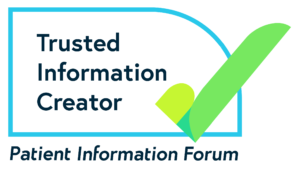Medication overuse headache
A headache that results from the frequent use of acute medicines or painkillers
What is medication overuse headache?
Medication overuse headache (MOH), is a headache that results from the frequent use of acute medicines or painkillers, such as triptans, ergotamines, opiates, non steroidal anti-inflammatory drugs (NSAIDs) and paracetamol.
It develops in people with a primary headache disorder, such as migraine (or a family history of migraine), usually with headache on 15 or more days per month. The medicine itself causes more headaches, which are sometimes referred to as ‘rebound headaches’.
Diagnosing medication overuse headache
Your doctor may diagnose MOH if you are regularly taking high levels of acute medicines (painkillers) for at least three months. This includes:
- paracetamol and NSAIDs (simple analgesics) on 15 or more days per month
or
- ergotamine, triptans, opioids (codeine-based medicines) as well as combination painkillers on 10 or more days per month.
What causes medication overuse headache?
Making sure you don’t regularly take painkillers on more than two days a week will reduce your risk of developing MOH.
Painkillers are generally safe to use on a limited number of days each month. It is also safe to use painkillers on extra days, on the occasional month or two. However, a high-level use of painkillers on a regular basis increases the risk of MOH and a vicious cycle can develop.
When this happens, pain returns as each dose of medicine wears off and even if the medicine is stopped, withdrawal symptoms are common. The need to relieve these withdrawal symptoms, and still treat the pain, leads to further use of painkillers and a cycle of medicine overuse starts. After a while the painkillers stop helping the original pain and start causing more pain.
Migraine and MOH
People with migraine will usually experience episodic attacks consisting of several symptoms (e.g. pain, nausea, vomiting, sensitivity to light and sound), but they go back to being symptom-free between attacks. In medication-overuse headache, a dull constant headache is present on most days or a part of every day. Eventually a pattern develops with headaches on most days and migraine attacks on top of that background pain. The overuse of painkillers may also reduce the effectiveness of preventive migraine medications.
Treating medication overuse headache
The treatment is to stop the medicines that are being taken at a high level and to manage the underlying migraine attacks differently.
The best means of withdrawing the use of these painkillers depends on the types of medicines being used and the person’s general health. Some people can stop the drugs immediately; for others it will be safer to reduce them gradually; and a few people may even need to be hospitalised to withdraw under medical supervision, especially if there are other medical conditions that need to be managed carefully.
Withdrawal symptoms
The most common withdrawal symptom is worsening of headache. Other symptoms may include nausea, poor sleep, restlessness, and stomach upset or diarrhoea.
Withdrawal symptoms from ergotamine, triptans and codeine or morphine-based medicines can be the most difficult to manage. Withdrawal of paracetamol and non-steroidal anti-inflammatory drugs (NSAIDs), such as aspirin, ibuprofen or naproxen, may be less severe. They are also likely to be less severe if the withdrawal process is gradual.
You should discuss a plan with your doctor before the withdrawal of painkillers. Some helpful strategies during the withdrawal stage might involve regular rest and sleep, anti-nausea medicines, keeping well hydrated, avoiding caffeine, reducing activities where possible and using soothing hot or cold packs.
Preventive treatment
If people have very frequent migraine attacks a preventive treatment is usually recommended. These can reduce the number of attacks, so that fewer painkillers are needed and reduce the likelihood of medication overuse headache. An effective preventive will usually give better overall control of migraine than painkillers or acute treatments alone.
If, despite preventive use, attacks do occur, it’s best to treat them early, as soon as the first symptoms are felt, as acute treatments are more likely to be successful at this stage. Additional doses should then be taken only as needed on a single day.
Managing triggers and lifestyle factors, so far as possible, can reduce attacks still further.
About our information
 This information has been written by The Migraine Trust Information and Support Services team. It has been reviewed by our panel of expert health professionals and people affected by migraine.
This information has been written by The Migraine Trust Information and Support Services team. It has been reviewed by our panel of expert health professionals and people affected by migraine.
Our information has been awarded the PIF TICK quality mark for trustworthy health information.
If you have feedback on our information, please get in touch at: feedback@migrainetrust.org
References for our information are available on request.


